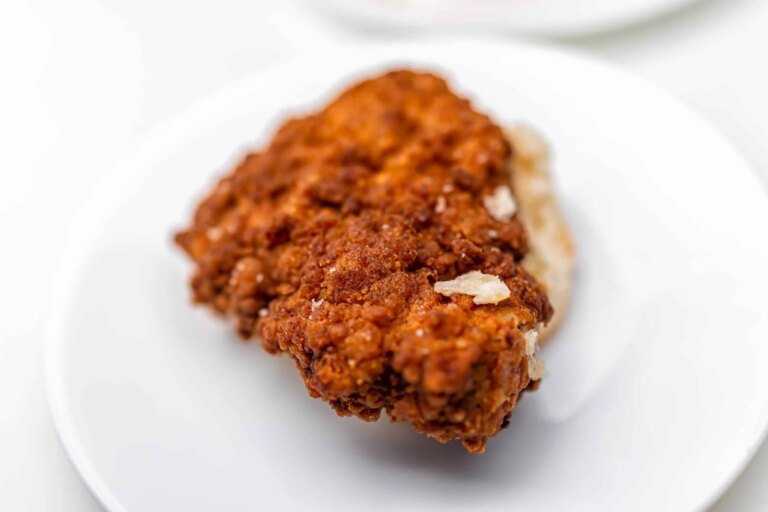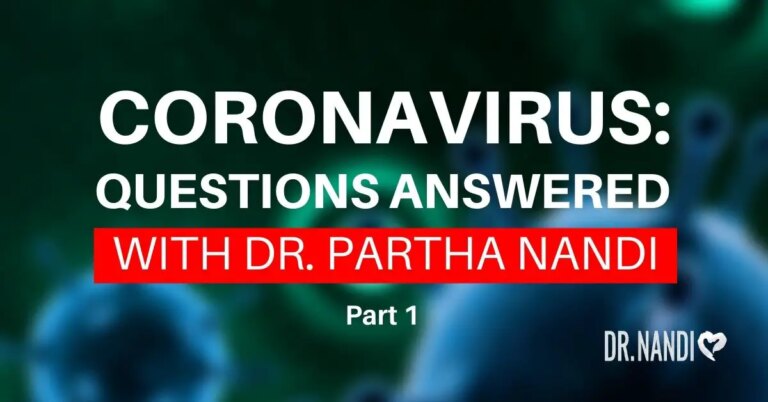Peanut butter is a favorite for many, known for its rich flavor and versatility in meals. However, there’s more to it than meets the eye, including additives and environmental impacts that could affect our health. This article takes a closer look at what’s really in your peanut butter and how it impacts your well-being, helping you make healthier choices.
From adding additives to the environmental practices behind its production, we journey through the aspects often overlooked but crucial for making informed dietary choices. By the end, not only will you view peanut butter through a different lens, but you’ll also be equipped with the knowledge to choose better for your health and the planet. Join us as we explore the intricate world of peanut butter, uncovering facts that will inspire and guide your path to a healthier lifestyle.
The Hidden Ingredients in Your Peanut Butter
When indulging in the creamy or crunchy delight of peanut butter, few of us consider what’s beyond the peanuts themselves. However, a closer look at the labels of many store-bought brands reveals a concoction of ingredients that might give health-conscious individuals pause. Here’s what you might find hidden in that jar:
- Hydrogenated Oils: Used to stabilize texture and prevent oil separation, these trans fats are linked to heart disease and other health issues. [1]
- Added Sugars: Often included to enhance flavor, excessive sugar intake can lead to weight gain, diabetes, and other metabolic disorders.
- Refined Salt: While salt is a common preservative, its high amounts can contribute to hypertension and cardiovascular diseases.
- Soy and Corn Syrup: Frequently genetically modified fillers can introduce unnecessary GMOs into your diet.
- Stabilizers: Chemicals added to maintain consistency may also affect your body’s natural processes.
Beyond the immediate health implications, these additives serve another purpose: they extend shelf life and improve texture, making peanut butter more palatable and less prone to separation. Yet, this convenience comes at a cost, not just to our health but also to our taste buds, which are deprived of the pure, rich taste of natural peanuts.
By choosing peanut butter with minimal and wholesome ingredients, you support your health and rediscover the authentic flavor of peanuts.

The Environmental and Health Impact of Peanut Cultivation
While seemingly innocuous, Peanuts are at the heart of various environmental and health concerns due to modern agricultural practices. The journey from seed to spread involves more than just harvesting and grinding; it encompasses a series of processes that can have significant implications for both our health and the environment.
Pesticide Use and Its Repercussions
Peanuts are among the most heavily treated crops in terms of pesticides and herbicides. These chemicals, designed to kill pests and weeds, can linger on peanuts and find their way into our peanut butter. One of the most notorious chemicals used in peanut farming is Glyphosate, a herbicide linked to serious health issues such as kidney disease, cancers, and DNA damage. [2] The widespread use of such chemicals poses a risk to consumers, farmers, and wildlife, contributing to the degradation of ecosystems and biodiversity loss.
The Burden of Aflatoxins
Aflatoxins, toxic compounds produced by certain molds, are another significant concern. These molds can grow on peanuts stored in warm, humid conditions, leading to contamination. Aflatoxins are carcinogenic and have been associated with liver cancer and other health problems. [3] Although there are regulations to limit aflatoxin levels in food products, the risk of exposure is higher with peanuts due to the conditions under which they are grown and stored.
The Nutritional Paradox: Omega-6 Fatty Acids
Peanuts naturally contain high levels of omega-6 fatty acids, which are essential for health but can be problematic in excessive amounts. The ideal dietary balance between omega-6 and omega-3 fatty acids is crucial for preventing inflammation and chronic diseases. However, the typical Western diet is heavily skewed towards omega-6 fats, exacerbating health issues like heart disease, obesity, and autoimmune disorders.
Sustainable Solutions: The Case for Organic Peanut Butter
Choosing organic peanut butter can mitigate many of these concerns. Organic farming practices prohibit the use of synthetic pesticides and herbicides, reducing your exposure to harmful chemicals. Additionally, organic peanuts are less likely to be contaminated with aflatoxins, as organic farming methods promote healthier soil and plant health, which can help prevent mold growth.
Nutritional Highlights and Health Benefits of Peanut Butter
Despite the concerns associated with conventional peanut butter, it’s important to remember that, at its core, peanut butter can be a nutritious addition to a balanced diet. When made with just peanuts, or minimally processed with few added ingredients, peanut butter offers a bounty of health benefits. [4] Here are some of the key nutritional highlights that make peanut butter a valuable food for health and wellness:
Rich in Heart-Healthy Fats
Peanuts are an excellent source of monounsaturated and polyunsaturated fats, known for their heart-healthy benefits. These fats can help lower bad cholesterol levels, thereby reducing the risk of heart disease. The presence of these beneficial fats also makes peanut butter a satisfying food, helping to curb hunger and prevent overeating.
Packed with Protein
Peanut butter is a good source of protein, making it a great option for vegetarians, vegans, and those looking to add more plant-based protein to their diets. Protein is essential for building and repairing body tissues, and it plays a crucial role in growth and development.
High in Vitamins and Minerals
Peanut butter contains various vitamins and minerals essential for good health, including Vitamin E, magnesium, potassium, and zinc. Vitamin E is an antioxidant that helps protect the body from oxidative stress. Magnesium supports muscle and nerve function, potassium is crucial for blood pressure regulation, and zinc is vital for immune system health.
Dietary Fiber for Digestive Health
The fiber content in peanut butter can aid digestion and promote gut health. Dietary fiber helps to normalize bowel movements, lower cholesterol levels, control blood sugar, and achieve a healthy weight.
Potential for Disease Prevention
Regular consumption of peanuts and peanut butter has been linked to a reduced risk of certain diseases. For instance, the monounsaturated fats in peanuts can improve insulin sensitivity, potentially reducing the risk of type 2 diabetes. Furthermore, the bioactive compounds and antioxidants in peanuts, such as resveratrol, may have anti-inflammatory properties that protect against chronic diseases. [5]
Choosing the Right Peanut Butter: A Guide to Healthier Selections
To truly enjoy the health benefits that peanut butter has to offer, selecting the right type is essential. The key is to look for peanut butter that is as close to its natural state as possible. Here’s how to make informed choices that support your health:
Opt for Simplicity
The best peanut butter options contain minimal ingredients, ideally just peanuts and possibly a small amount of salt for flavor. This simplicity ensures that you’re consuming a product that’s free from unnecessary additives like sugars, oils, and preservatives, which can detract from the nutritional value and potentially harm your health.
The Importance of Going Organic
Organic peanut butter is made from peanuts that have been grown without the use of synthetic pesticides and fertilizers. These chemicals can remain as residues on peanuts and ultimately end up in non-organic peanut butter. By choosing organic, you reduce your exposure to these potentially harmful substances, supporting not only your own health but also environmentally friendly farming practices.
Natural Peanut Butter: A Healthier Alternative
Natural peanut butter takes simplicity a step further by ensuring the product is processed without artificial ingredients or chemical additives. This type of peanut butter often has a layer of oil at the top, which is a natural result of the separation process and indicates a lack of hydrogenated fats. Stirring the oil back in before you use it retains the creamy texture while keeping the product healthier.
Reading Labels Carefully
When selecting peanut butter, it’s crucial to read the label and ingredient list. Avoid products with hydrogenated oils (trans fats), excessive added sugars, and artificial ingredients. These can negate the health benefits of peanut butter, contributing to heart disease, diabetes, and other health issues.
The Benefits of Making Your Own
For those who want to take control of what goes into their peanut butter, making it at home is a surprisingly simple and rewarding process. All you need is a food processor, peanuts, and a bit of salt. This way, you can ensure your peanut butter is free from unwanted additives and customize it to your taste preference.
Choosing the right peanut butter is about more than just taste; it’s about prioritizing your health and the environment. By opting for products that are organic, minimally processed, and free from harmful additives, you can enjoy all the nutritional benefits peanut butter has to offer without the downsides.

Exploring Alternatives: Beyond Peanut Butter
While peanut butter holds a special place in many hearts (and pantries), the world of nut and seed butters is vast and varied, offering flavors and nutritional benefits to suit every palate and dietary need. Here’s a look at some nutritious and delicious alternatives to traditional peanut butter:
Almond Butter
- Nutritional Profile: High in monounsaturated fats, vitamin E, magnesium, and calcium, almond butter is a powerhouse of nutrients beneficial for heart health, bone strength, and skin health.
- Flavor and Use: With a slightly sweeter taste than peanut butter, almond butter is versatile in both sweet and savory dishes.
Cashew Butter
- Nutritional Profile: Rich in iron, magnesium, and zinc, cashew butter supports immune function, bone health, and energy production.
- Flavor and Use: Creamy and smooth with a natural sweetness, it’s perfect for smoothies, sauces, and baking.
Sunflower Seed Butter
- Nutritional Profile: A great nut-free option, it’s high in vitamin E, selenium, and magnesium, offering antioxidant and anti-inflammatory benefits.
- Flavor and Use: Its distinct, nutty flavor works well in sandwiches, dressings, and as a dip for fruits and vegetables.
Tahini (Sesame Seed Butter)
- Nutritional Profile: Loaded with healthy fats, calcium, and zinc, tahini supports bone health and immune function.
- Flavor and Use: Its unique, savory flavor makes it a staple in Middle Eastern dishes, dressings, and hummus.
Tips for Choosing the Best Nut and Seed Butters
When venturing into the diverse world of nut and seed butters, keep these tips in mind to ensure you’re selecting the healthiest options:
- Read the Ingredient List: Opt for butters with minimal ingredients, ideally just the nuts or seeds and perhaps a bit of salt. Avoid products with added sugars, oils, or preservatives.
- Choose Organic: To minimize exposure to pesticides and chemicals, select organic options whenever possible.
- Natural and Unprocessed: Look for natural or raw varieties that haven’t been heavily processed or include hydrogenated oils.
- Make Your Own: Consider making nut or seed butter at home. This way, you control the ingredients and can ensure there are no unwanted additives.
Incorporating Nut and Seed Butters into Your Diet
Nut and seed butters can be more than just a spread for toast. They’re incredibly versatile, making excellent smoothie thickeners, bases for sauces and dressings, and key ingredients in baking. Experimenting with these butters can introduce new flavors and textures to your meals and diversify your nutrient intake.
Moderation and Mindful Eating
As we’ve journeyed through the complexities of peanut butter, explored its healthier alternatives, and delved into the nutritional benefits of various nut and seed butters, one principle stands clear: moderation is key. While these butters are undeniably packed with nutrients and can be a beneficial part of a balanced diet, they are also calorie-dense. Mindful consumption ensures that you can enjoy the health benefits without overindulging.
Integrating Nut and Seed Butters into a Balanced Diet
- Portion Control: A serving size of nut or seed butter is typically two tablespoons. Stick to this portion to enjoy its benefits without excessive calorie intake.
- Variety: Rotate between different types of nut and seed butters to enjoy a range of nutrients. Each type offers unique vitamins, minerals, and health benefits.
- Balance: Pair nut and seed butters with foods high in fiber, vitamins, and minerals. For example, spreading almond butter on whole-grain bread or adding sunflower seed butter to a smoothie can enhance the nutritional value of your meals.
Listening to Your Body
Each individual’s dietary needs and health goals are unique. What works for one person may not work for another. Paying attention to how your body responds to different foods, including nut and seed butters, can guide you toward the best choices for your health.
Embracing a Healthy Lifestyle
Ultimately, including nut and seed butters should be part of a broader commitment to a healthy lifestyle. Balanced eating, regular physical activity, adequate hydration, and stress management are all integral to wellbeing.
Peanut butter and its alternatives offer a fascinating glimpse into the broader discussion about food choices, health, and sustainability. By choosing wisely and consuming mindfully, we can enjoy these foods’ rich flavors and nutritional benefits while supporting our health and the planet’s health. Remember, the journey to a healthier life is not about restriction but about making informed choices that enhance our wellbeing. Enjoy the journey, one spoonful at a time.
My Personal RX on Peanut Butter Side Effects
As a physician deeply invested in the well-being of my patients, I’ve seen firsthand the impact that dietary choices can have on our health. When it comes to peanut butter, a staple in many diets, understanding its side effects is crucial for making informed decisions. Here are my tips for mitigating the potential negative impacts of peanut butter consumption while also enhancing overall health and wellness:
- Prioritize Balance in Fatty Acids: To counteract the high levels of omega-6 fatty acids in peanut butter, consider integrating my Omega-3 Fish Oil supplement into your diet. This can help maintain a healthier balance, supporting holistic heart health and cognitive function.
- Incorporate Superfoods: Explore creative ways to integrate nutrient-rich foods into your meals. My Superfoods Cookbook can be a great resource, offering wholesome recipes that make adding superfoods to your diet both fun and enjoyable.
- Choose Organic and Natural: Opt for organic and natural peanut butter varieties to avoid pesticides, additives, and harmful trans fats. This simple switch can significantly reduce your exposure to substances that may contribute to health issues.
- Mind the Portion Size: Even the healthiest peanut butter is calorie-dense. Practice portion control by limiting your intake to a recommended serving size of two tablespoons per day to avoid excess calorie consumption.
- Diversify Your Nut Butter Selection: Don’t rely solely on peanut butter for your nut intake. Experiment with other nut and seed butters like almond, cashew, and sunflower seed butter to enjoy a variety of nutrients and reduce the risk of developing food sensitivities.
- Watch for Additives: Always read the label before purchasing peanut butter. Avoid products with added sugars, salt, or hydrogenated oils that can negate the health benefits of peanuts.
- Stay Informed About Allergies: Be aware of any peanut allergies in your household. Peanut butter can be a potent allergen, and recognizing the signs of an allergic reaction is vital for prompt and effective treatment.
- Incorporate Healthy Fats: Balance your intake of fats by including other sources of healthy fats in your diet, such as avocados, olive oil, and fatty fish, to complement the fats found in peanut butter.
By following these tips, you can enjoy peanut butter as part of a balanced and health-conscious diet, while also taking steps to mitigate its potential side effects. Remember, the key to a healthy diet is variety, moderation, and informed choices.
Sources
- Kummerow F. A. (2009). The negative effects of hydrogenated trans fats and what to do about them. Atherosclerosis, 205(2), 458–465. https://doi.org/10.1016/j.atherosclerosis.2009.03.009
- Peillex, C., & Pelletier, M. (2020). The impact and toxicity of glyphosate and glyphosate-based herbicides on health and immunity. Journal of Immunotoxicology, 17(1), 163–174. https://doi.org/10.1080/1547691x.2020.1804492
- Magnussen, A., & Parsi, M. A. (2013). Aflatoxins, hepatocellular carcinoma and public health. World journal of gastroenterology, 19(10), 1508–1512. https://doi.org/10.3748/wjg.v19.i10.1508
- Arya, S. S., Salve, A. R., & Chauhan, S. (2016). Peanuts as functional food: a review. Journal of food science and technology, 53(1), 31–41. https://doi.org/10.1007/s13197-015-2007-9
- Bonku, R., & Yu, J. (2020b). Health aspects of peanuts as an outcome of its chemical composition. Food Science and Human Wellness, 9(1), 21–30. https://doi.org/10.1016/j.fshw.2019.12.005




















